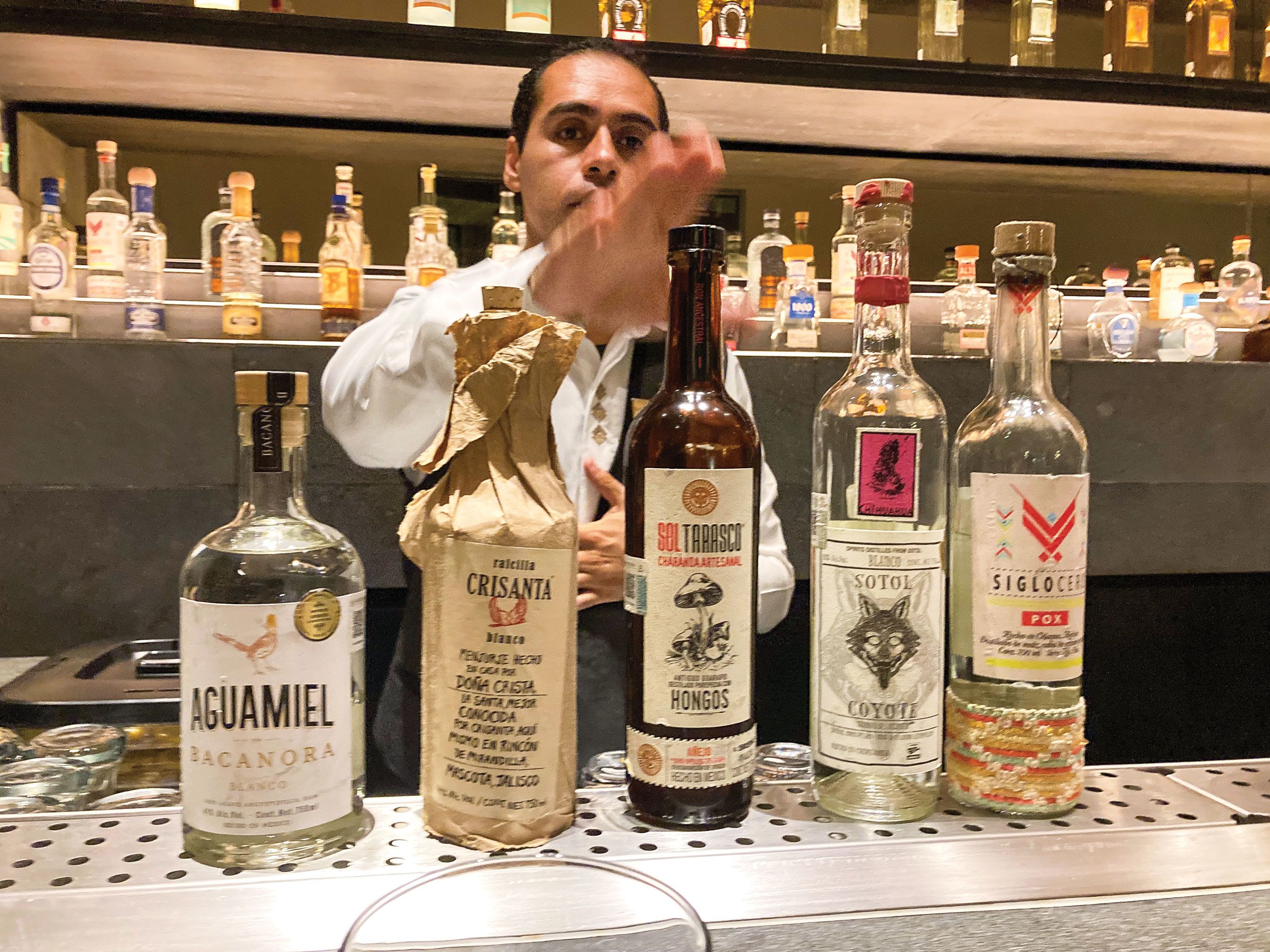Beyond tequila at the Secrets Moxche Playa del Carmen

Beyond tequila at the Secrets Moxche Playa del Carmen
BY CHRISTINA JELSKI
SEPTEMBER 25, 2023

PLAYA DEL CARMEN, Mexico — When most Americans think Mexican spirits, their minds go straight to tequila.
When they think more obscure Mexican spirits, those thoughts may gravitate to mezcal, which has enjoyed a recent surge in U.S. popularity.
When they think of Mexican wine — well, they may not think about that at all.
These limited perceptions mirrored my own as I sat down for an omakase-style taco-and-drink pairing experience at Mexican restaurant Dos Almas, a part of the Secrets Moxche Playa del Carmen all-inclusive resort here.
Going into the experience, I expected the tacos to take center stage, and they certainly packed plenty of punch, thanks to highlights such as a rich black mole taco layered with short rib, carrot puree and zucchini flowers, as well as a tempura mahi-mahi taco, anchored by a bright pink, beet puree-infused tortilla.

A shrimp taco served as part of a taco-and-drink pairing at the resort’s Dos Almas restaurant. (Photo by Christina Jelski)
A shrimp taco served as part of a taco-and-drink pairing at the resort’s Dos Almas restaurant. (Photo by Christina Jelski)
But it was a few of the beverages, which went well beyond tequila and mezcal, that ended up being the most memorable standouts. A shrimp taco course, for example, was paired with a glass of crisp colombard white wine from Monte Xanic, a winery in the Valle de Guadalupe in Baja California, while chocolate bonbons were served alongside a pour of Nixta, a sweet, ancestral licor de elote, or corn liqueur, from Jilotepec.
And the pairing, it turned out, was just an introductory course when it came to furthering my knowledge on Mexican drinks.
After dinner, I grabbed a seat at the restaurant’s bar, where Salvador Zepeda, who spearheads beverage programming at the Secrets Moxche, was on hand to lead me through a veritable master class in traditional Mexican spirits.

Nixta, a sweet, ancestral licor de elote, or corn liqueur. (Photo by Christina Jelski)
Nixta, a sweet, ancestral licor de elote, or corn liqueur. (Photo by Christina Jelski)
First up was pox, pronounced like “posh,” which Zepeda described as a corn-based liquor originally crafted by the Mayans as a medicinal and ceremonial libation. He poured the blend of corn, sugar cane and wheat from a bottle produced by a Chiapas-based pox distiller.
While the liquor’s smokiness instantly reminded me of mezcal, the sugar cane lent a distinct sweetness to its flavor profile, creating some unusual contrast.
Next in the lineup was sotol, which is traditionally produced in Durango or Chihuahua and, in the words of Zepeda, “is made from a plant that looks like agave but is not agave.” (The plant in question, based on some subsequent Internet research, is formally known as dasylirion wheeleri and does indeed have a rosette of spiky leaves similar to that of the agave.)
The sotol I sipped on was a bottle of unaged, blanco sotol, and at 50% alcohol by volume, it had plenty of sharp bite as well as some herbal notes.
On the heels of the sotol, Zepeda poured some charanda, which is made with sugar cane and draws some parallels to other sugar cane-based spirits like rum or Brazil’s cachaca. The artisanal charanda I sampled, however, was also infused with mushrooms and aged in oak, resulting in a unique flavor blending smooth, rum-like sweetness with more-complex savory notes.
Rounding out the tasting session was a pour of Jalisco-crafted raicilla, a sister to mezcal that’s similarly made with agave, as well as another agave-based spirit known as bacanora, which is traditionally produced in Sonora.
While both of these unaged liquors were a bit more familiar on the tongue, tasting similar to a blanco tequila or a mezcal minus its smoke, they were a testament to the sheer diversity of flavors within Mexico’s drinks landscape.
Tequila and mezcal may currently reign supreme, but if the Secrets Moxche has anything to say about it, their days as the only Mexican spirits of note for U.S. travelers may be numbered.


